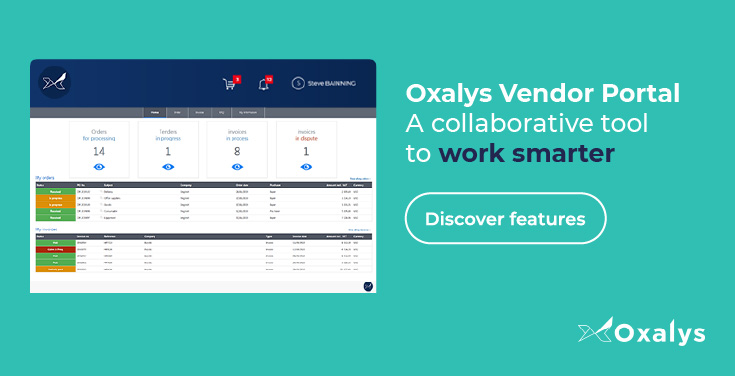Managing vendors is a vital part of any organization’s procurement strategy. The aim is to source the best products and services, for the best price, with minimal stress and disruption. Vendor management involves developing open working relationships with new and existing third-party suppliers to ensure that they meet our needs. Online technology platforms have been developed to streamline this process by automating routine tasks and opening up channels of communication.
What does vendor management include?
Proactive vendor management can include some or all these functions:
- Sourcing of new vendors, capability assessment, and onboarding
- Providing two-way real-time communication channels between the buying company and the vendor including dispute resolution
- to ensure vendors are complying with company policy and industry standards as well as all applicable laws and regulati
- Performance measurement, tracking metrics, and reporting
Beyond these main functions, more mature procurement organizations will include additional areas to include:
- Contract creation, negotiation, and agreement
- Action plans to improve the relationship (quality, productivity, etc.)
- Agreeing on mutually beneficial business goals
- Improved methods to minimize risks
Why centralising vendor management is important?
One benefit of a centralised system of vendor management is cost savings, identified as the #2 priority of procurement teams in the 2022 South Africa procurement survey. Cost savings are realised through opening up opportunities for efficiencies, continuous improvement, and innovation. The partners work together to find the best and most cost-effective products and services. Secondly, by providing one avenue for open dialogue, service disruptions are avoided and risks are minimized. Managing third-party risk and compliance are becoming procurement priorities. Reducing supply risk was voted #1 priority for South African procurement departments in the 2022 Oxalys procurement survey. Business risks include financial, cyber and reputational exposure. New and existing contracts must address these areas of risk and include plans to diminish or share them.
Centralising vendor management is achieved using a digital platform – a portal.
A portal is a web-based platform that assembles information from different sources into a single user interface. Simple web portals have evolved into platforms that support a wide range of supplier relationship management (SRM) initiatives. A vendor management portal can centralise and support vendor onboarding, approvals, and compliance management. All authorized users can quickly and easily view and manage vendor information in one place. It is also an effective collaboration tool.
Collaboration Tips
✔️ Establish a clear internal process to capture supplier ideas for continuous improvement and innovations.
✔️ Work with the supplier to agree on the key performance indicators (KPIs).
❌ Don’t ignore or disregard supplier feedback at any level or via any function in the organization.
❌ Don’t exclude end-users when exploring collaboration opportunities with suppliers.
The challenges of vendor management where there is no centralized system mean:
- Communications to-and-from multiple sources are unstructured and haphazard, leading to errors and misunderstandings. Without a structured two-way process, feedback is difficult and problems are hard to rectify.
- There is a lack of visibility needed to monitor performance and ensure vendors are meeting agreed quality, on-time delivery and other performance goals.
- Without a centralized method for tracking and monitoring vendor compliance, companies are exposed to legal and regulatory risks.
Three key vendor management aspects on which you should focus your efforts
Onboarding new vendors
The process involves collecting vendor master information, verifying identity and credentials, and ensuring compliance with statutory requirements, regulations, and industry standards. The next step is to set up payment systems and explain your source-to-pay and other procurement policy and processes. Specific training may be necessary and should be recorded. Successful onboarding limits the risk of non-compliance.
Continued compliance
Vendor compliance involves continuing to verify that vendors have the necessary current permits and licenses that they need to avoid penalties and supply issues. It also includes checking adherence to contract terms and conditions, including pricing.
Monitoring performance
Key performance indicators (KPIs) are widely used to measure the performance of vendors. These metrics can include late deliveries, quality of goods and services delivered, adherence to service levels and pricing, and compliance with regulations. Frequent monitoring of KPIs helps to identify problem areas as they arise which ensures they can be addressed early.
How do I develop a vendor management strategy?
- Understand your objectives. What do you want to achieve by managing your vendors more efficiently?
- Set selection criteria for new vendors and define what goods and services they will provide to meet your business needs. Criteria can include cost, quality, delivery times, and customer service.
- Develop an onboarding process to suit your company’s specific requirements and ensure enough resources are available to manage the process.
- Define performance measures. The KPIs should be agreed upon with the vendor and include metrics for tracking chosen performance levels on a pre-defined calendar. Structured feedback will help to ensure that vendors are meeting expectations.
- Review and revise your vendor management strategy to ensure it is working as designed.
The vendor management portal
An online web-based real-time portal, at the centre of a procurement strategy, provides a secure environment for data sharing between us and our vendors. It is a centralized hub for managing the entire relationship. The portal provides transparency and visibility into the vendor’s performance, making it easier to identify areas for improvement.
Top benefits of implementing a vendor portal for your organisation
Communicate better
Vendor partnerships require collaboration and a vendor platform can provide that solution. The Oxalys Supplier Portal is where your suppliers can send and receive all documents including orders and invoices related to your business relationship. You can receive and send notifications for online approvals.
Delegate low-value tasks to your prospective vendors
Collect compliance documents, update administrative information. Our Supplier Portal allows you to free up your teams by delegating these time-consuming tasks.
Save time & empower your suppliers
Give suppliers the permissions they need to complete tasks they can manage on their end, while you focus on tasks with higher added value for you.





